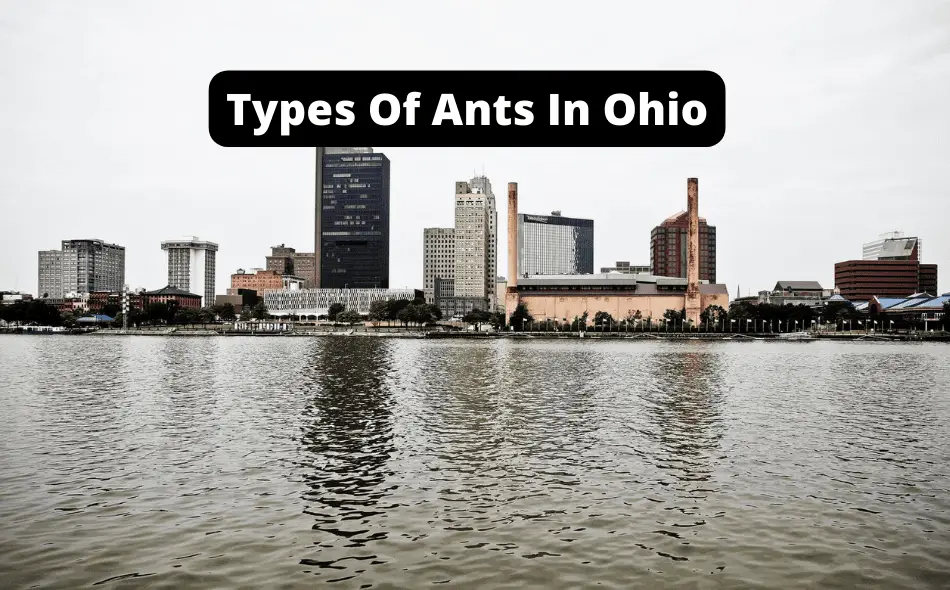While Ohio may not have the same desert landscapes as Arizona, it is known for its picturesque rolling hills and quaint small towns.
The state is home to several world-renowned amusement parks, including Cedar Point and Kings Island, as well as the Rock and Roll Hall of Fame in Cleveland.
However, we can’t forget to mention Buckeye State’s impressive sports culture, with teams like the Cleveland Cavaliers and Ohio State Buckeyes gaining national attention.
…And let’s not forget the delicious food scene, with iconic dishes like Cincinnati-style chili and buckeye candies.
Overall, Ohio has much to offer visitors and residents alike. While all of this is nice, we can’t forget the cool ants that are in Ohio. These ants listed below would be perfect to start your ant-keeping journey, as they’re well-adjusted to Ohio’s humidity, water, and temperature!
Types Of Ants In Ohio
Ohio has some really awesome ants; these include Allegheny Mound Ants, Black Carpenter Ants, Carpenter Ants, Chestnut Carpenter Ants, Fire Ants, Ghost Ants, Hercules Ants, Incomplete Ants, Little Black Ants, Odorous House Ants, Pavement Ants, Pitch-black Collared Ants, Punctured Ants, Red Wood Ants, Silvery Field Ants and Uncertain Field Ants.
Eastern Black Carpenter Ant
Black carpenter ants are known to leave pheromones (scent gland) traces as they seek food at considerable distances of upwards of 100 yards (91 meters) from their nest.
They must hunt this far away from their homes because so many ants can live in a single nest.
The worker’s loud crackling noise makes it possible to identify these huge nests even in the dark.
Although the black carpenters cannot cause extreme harm, the big workers may deliver a hurtful bite.
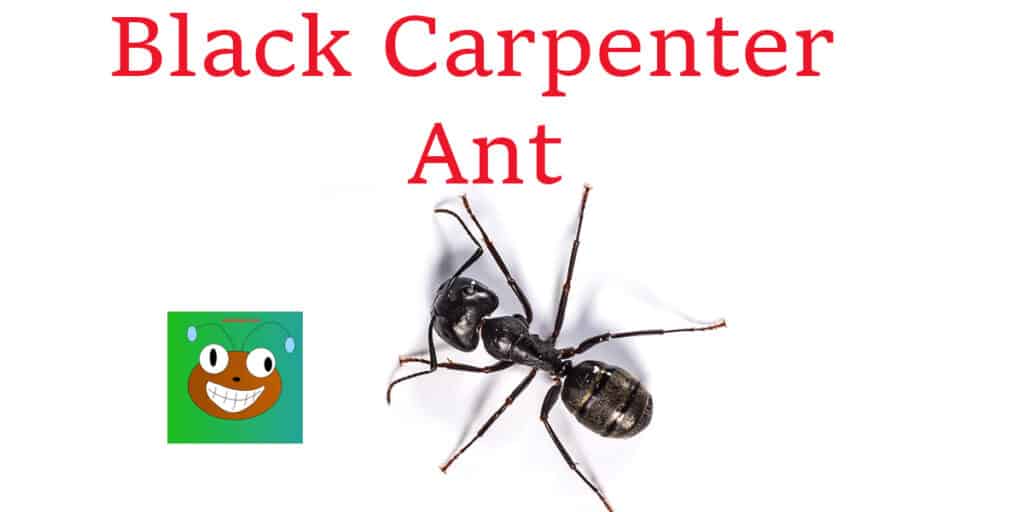
When biting, the black carpenter ant is known to spray formic acid, making the bite hurt just a bit more.
Aphids are cared for by worker carpenter ants, who raise them. In return, the aphids spit out honeydew that the black carpenter ant enjoys and brings back to the nest.
This isn’t all they eat; foragers consume plant liquids, bugs, and insects.
Black Carpenter ants build their nests in tree stumps and other types of wood. While this does promote decomposition, which is advantageous for the environment, the overall structural damage that black carpenter ants cause is extensive.
These ants are known to build nests in homes and abandoned barns, creating havoc for homeowners.
Carpenter Ant
Carpenter ants got their name because they dig wood to make their nests, creating neat tunnels within the wood.
These ants will only chew and burrow through the wood to build nests; Interestingly, they do not consume wood.
Carpenter ants’ length ranges from 12 to 25 mm, depending on the species.


Carpenter ants that are black are frequent pests, but these insects can also be all-black, all-red, or all-brown.
When mature, the black western carpenter ants colony has ten to twenty thousand workers.
Incredibly, some big colonies have more than fifty thousand ants.
In most territories, there is only one active, wingless Queen. The colony must be older than two years before the production of swarmers takes place (potential new queens).
Instead, swarmers are produced the year before and kept in the nest during winter in preparation for the ensuing years’ dispersal.
In the east of the US, swarmers arrive from May through August, whereas in the west, they appear from February till June.
Red Imported Fire Ant
Some of the approximately 200 distinct insects in the genera are known as “fire ants.”
Due to their red color, they do not belong to the subspecies Solenopsis Richteri.
Many of the names possessed by each species of Solenopsis are commonly used interchangeably when referring to each other, such as the term “red ant.”
The three body parts of adult fire ants are the skull, the thoracic, and the abdomen, along with three sets of limbs and a group of antennas.
Luckily, this is the same as the anatomy of all other adult insects.
The red fire ant has a golden-brown skull with a dark metasoma (abdomen).
The ants vary in length from 2 – 6 mm and are two colored, black and red.
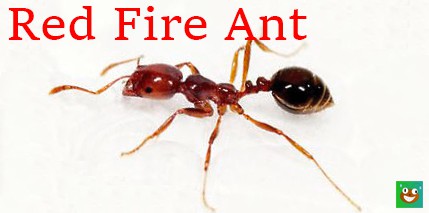
An easy way to identify a fire ant is by its dark abdomen and contrasting red thorax.
These ants are aggressive, eat anything in their path, and breed at an accelerated pace.
Fire ants can become worker ants in just 15 days. These ants are officially a pest in the United States, consuming over 300 million acres.
Ghost Ant
This ant looks like it should star in a Halloween movie.
With a dark shade on its head, pale and translucent legs, and Gaster, this Ant seems like it could be a ghost.
This ant is about 1/16th inch long but sometimes looks even smaller.
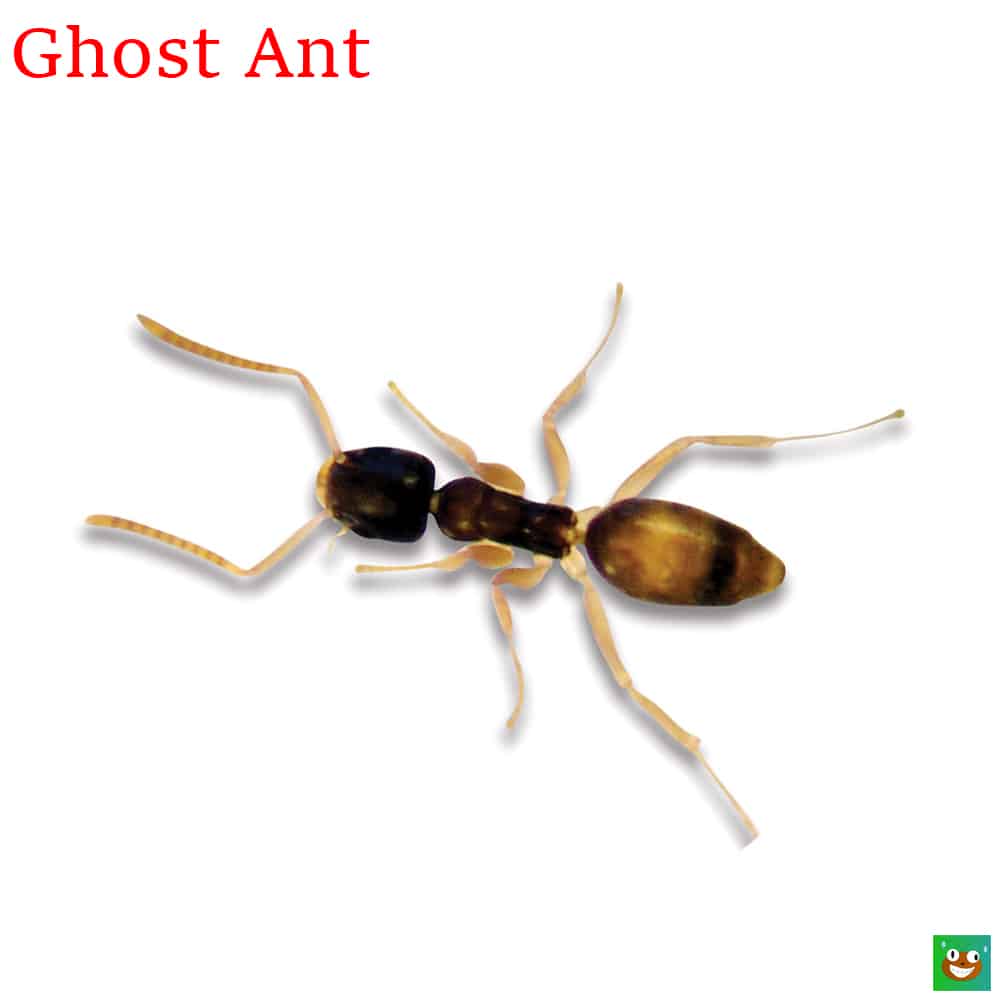
The unique thing about this ant is since its legs are translucent, many people underestimate their size
…or don’t see this ant crawling around at all.
These ants love sweets, so make sure you don’t drop any cookies during your midnight snack run.
An interesting fact about Ghost Ants is that they can actually have multiple Queens in one nest.
This is unique, as most ant species have one Queen Ant.
Incomplete Ant
This ant lives in deciduous woods that produce enormous polygynous (several queens) or polydomous (countless nests) communities on damp soil and mossy hills.
Formicoxenus Provencher, a parasitic ant, lives there as its host.
Although the boreal Myrmica Alaskensis and the peaceful M. Incomplete seem identical, they may be distinguished with a deeper look.
The clypeus protrudes upwards and has a recessed edge in M. Incomplete, yet is squashed and has a curved edge in M. Alaskensis, as well as the baia on the neck, which is reticulate (cap) in M. Incomplete and yet concurrent in M. Alaskensis.
These differences are helpful morphological characteristics to differentiate between the two similar species.
Little Black Ant
The little black ant is native to North America.
Known for their lustrous black hue, the workers are 1 – 2 mm long, and the Queen is 4 – 5 mm in size.

A colony may have more than one Queen because it’s a polygynous species.
A nest typically has a few hundred workers, a modest size.
These scavengers, known as Monomorium minimum, can eat anything, including dead insects and bird droppings.
Some of their favorite insects to eat are fall webworm larvae and codling moth caterpillars.
Additionally, they tend to collect honeydew insects like the soybean aphid. Although they prefer to nest on earth mounds, they may scan for other homes with ease of access.
Queens and males execute the nuptial flight, bonding in midair, mostly in summertime.
The males pass away soon after. Every Queen builds a new nest, removes her wings, then lays eggs.
Since this colony is polygynous, expect more queens shortly after. It takes around a month for an egg to mature into an adult.
Odorous House Ant
The worker-odorous house ants are around 3mm long and black to dark brown.
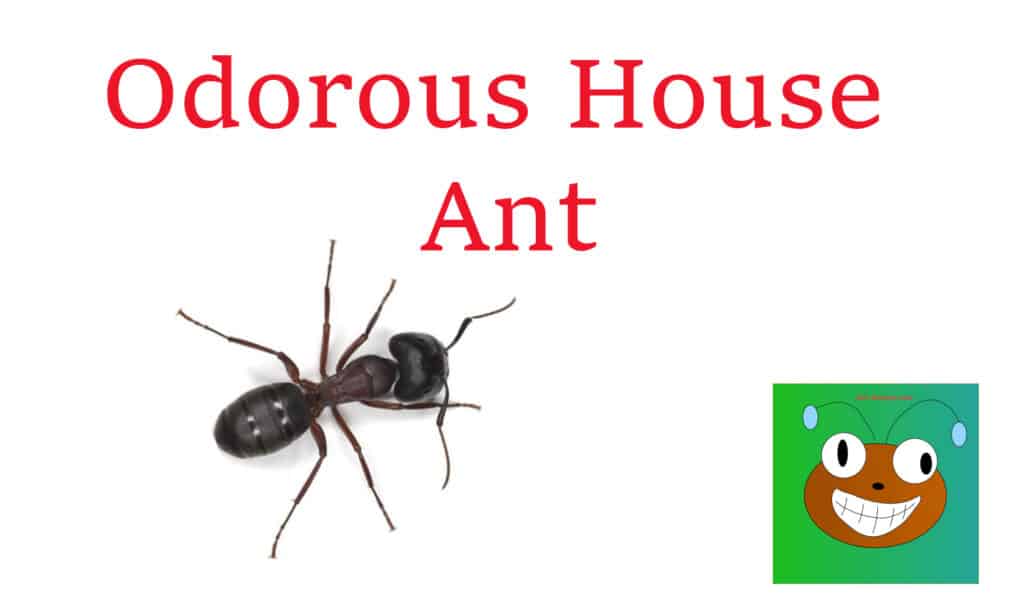
Additionally, they have antennae that resemble a long stick.
Crushed, odorous house ants produce a pungent, rotten coconut-like stench that gives these insects their name.
Odorous house ants build their nests indoors next to moist areas, such as heaters, heater cavities along hot water pipes, under leaking fixtures, and on termite-damaged wood.
Outside, odorous ants are frequently discovered on bare soil or beneath firewood piles. Odorous house ants enjoy eating sweets and particularly enjoy consuming honeydew.
Occasionally, they eat other things, such as pet food or insects. Approximately tri-monthly, they often relocate their nests because of rain.
They create new colonies following mating flights at the end of spring and summer.
Colonies are also split by the budding process, in which a queen leaves her nest with some workers to start a new colony elsewhere.
Pavement Ant
The head and thorax of pavement ants are marked with grooves, the thorax being the only part of the body-bearing spines.
Their size is usually between 2.5 and 3 mm in length.
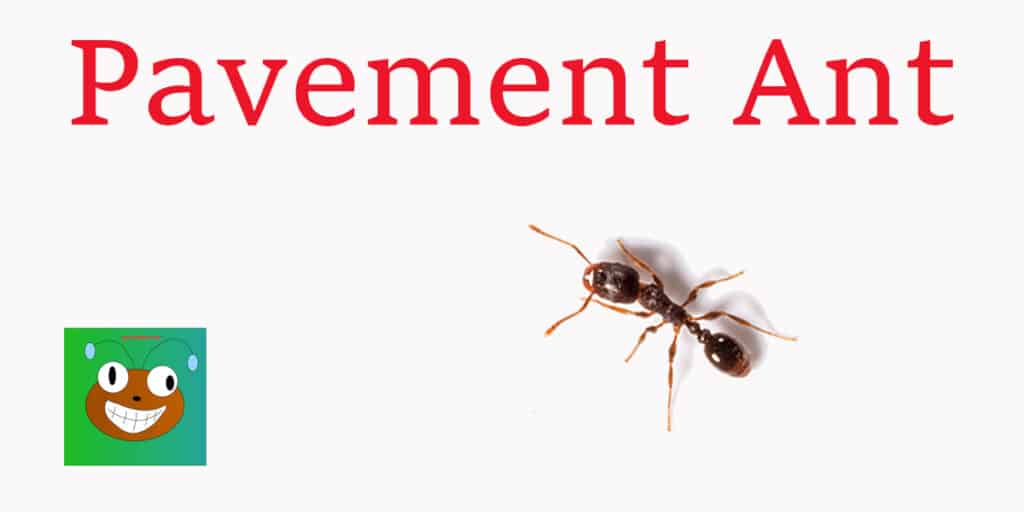
Pavement ants get their name because they typically make their nests under roadways, building foundations, and sidewalks.
Therefore, an area of disturbed soil near a paved surface is likely the result of pavement ant activity. Pavement ants may build their nests inside buildings near a heat source, mainly during winter.
These trailing ants consume many items, including honeydew from aphids, oily foods, seeds, and dead insects. Pavement ant colonies include up to 4,000 workers comprising several queens.
The queens are much bigger than the workers, going upwards of 9 mm in length.
The drones and young queens searching for partners are frequently spotted on nuptial flights during the end of spring and the start of summer. Drones and queens that reproduce have wings.
Pitch-Black Collared Ant
The pitch-black collared ant is a typical ant located in an expanse of woodland environments in the eastern States.
Aphaenogaster Picea and Aphaenogaster Rudis have numerous physical and biological similarities, making them close relatives.
The Aphaenogaster Picea isn’t entirely black, unlike their English title would suggest.
In reality, the Aphaenogaster picea comes in various deep red, brown, or even black tints, such as the Aphaenogaster occidentalis and the Aphaenogaster rudis.
The queens are typically 7mm or 8mm in size, whereas the workers are typically 4mm – 6mm.
Some well-fed queens can measure 11mm – 13mm in length.
These ants serve as a habitat for other ants and are the favored food of the Eastern Ruby Salamander.
These ants can expand more quickly if they receive consistent protein from bugs.
They eat various foods, such as plants, grapes, and different kinds of bugs.
If you give them anything that can absorb liquids, such as cotton and tissues, the individuals will use those items to collect the fluid and bring it up to the nests.
Silvery Field Ant
The Sahara Desert is home to the Saharan silvery ant.
However, these ants have made their way to some drier areas in North America.
These ants are roughly 0.83 cm in length.
They are slender workers and warriors with enormous skulls and broadsword mandibles that may be seen in the nests of the silvery ant.
Workers and soldiers have a metallic shine in direct sunlight, supporting the species’ colloquial name. Many people refer to the Saharan silvery ant as an ant inside a silvery space suit because of its silver body.
Saharan silvery ants consume the dead bodies of mammals in the desert. Within the scorching Sahara Desert, such animals typically perish.
These ants are only active (beyond their colony) for around ten minutes every day, primarily because of the extreme temperatures in their environments and the danger of predators.
Because these ants navigate by watching the sun’s direction, they can always understand the shortest path back to the colony and spend as little time as possible in the sunlight.
Uncertain Field Ant
The Uncertain Field Ant is an ant genus discovered throughout eastern North America.
These ants have some chaetae upon the mesosoma around the tip. Although F. incerta is less shiny and has a lighter hue than F. pallidefulva, there is still a lot of variation between clusters and single specimens.
Their three dark dots upon that queen’s abdomen help to differentiate them from a queen of another species.
Like most ants, the queen is a bit bigger than the rest of the workforce.
These ants may be seen in sparse forests, forest trails, prairies, playgrounds, meadows, and highway verges.
However, they prefer grassland, fields, and hedgerows.
Thousands upon thousands of ants live in a nest with their eggs, larvae, and adults, ranging range from 6-9mm.
F. incerta consumes various foods, and their foragers hunt for nectar from extrafloral calyx on plants, including partridge beans and sunflowers.
Additionally, they collect honey from insects and grasshoppers and guard their food supply against parasitoids, ants that are not nestmates, and other insect species.
Punctured Ant
On average, Punctured ants have longer exteriors and spikes, more extensive, rougher sculptures, less formed frontal lobes, and a small length difference between the maximum and lowest breadth (A uniform bunch!).
The shape of a queen’s skull, the sculpture’s characteristics, her body’s hue, and the pellucidity are essentially equal to those of the workforce.
The Punctured ant is commonly seen as a wood inhabitant in mostly eastern dense woodlands. However, the genus has been recognized in various woodland environments, including stands of oaks, pine, mingled pines, mixed woods, and Laurentian birch.
The ants can be around 6-12 mm in length.
Punctured ants thrive in partially open woodlands, from dry through humid climates. Tiny nests can be found in the dirt behind debris, moss, pebbles, walnuts, or sporadically in pieces of wood. The parasitic species live and prey on smaller, less advanced subspecies of ants.
They are found in tiny colonies living beneath the wood of decaying logs, old oak trees, fallen leaves, and pebbles. They forage for plant matter and non-friendly larvae.
